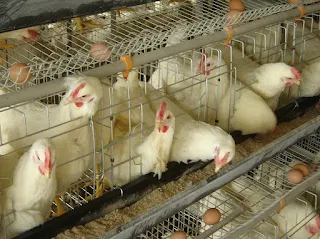On 23 February 2023, the Cambodia International Health Regulations (IHR) National Focal Point (NFP) reported one confirmed case of human infection with avian influenza A (H5N1) virus to WHO. A second case, a family contact of the first case, was reported on 24 February 2023. An outbreak investigation is ongoing including determining the exposure of these two reported cases to the virus.
These are the first two cases of avian influenza A (H5N1) reported from Cambodia since 2014. In December 2003, Cambodia reported an outbreak of Highly Pathogenic Avian Influenza (HPAI) H5N1 for the first time affecting wild birds. Since then, and until 2014, human cases due to poultry-to-human transmission have been sporadically reported in Cambodia.
H5N1 infection in humans can cause severe disease, has a high mortality rate, and is notifiable under IHR (2005).
Description of the cases
On 23 February 2023, the IHR NFP of Cambodia notified WHO of a confirmed case of human infection with avian influenza A (H5N1) virus. The case was an 11-year-old girl from Prey Veng province, in the south of Cambodia. On 16 February 2023, the case developed symptoms and received treatment at a local hospital. On 21 February 2023, the case was admitted to the National Pediatric Hospital with severe pneumonia. A sample was collected the same day through the severe acute respiratory infection (SARI) sentinel system and tested positive for avian influenza A (H5N1) virus by the reverse transcriptase-polymerase chain reaction (RT-PCR) at the National Institute of Public Health on the same day. The sample was also sent to Institute Pasteur Cambodia, the National Influenza Center, which confirmed the finding. The patient died on 22 February 2023. Cambodia shared the genetic sequence data of the virus from the index case through the publicly accessible database GISAID. Virus sequencing shows the H5N1 virus belongs to clade 2.3.2.1c, and similar to the 2.3.2.1c clade viruses circulating in poultry in southeast Asia since 2014.
A total of twelve close contacts (eight asymptomatic close contacts and four symptomatic who met the suspected case definition) of the index case were identified and samples were collected and tested. Laboratory investigations confirmed the second case on 23 February 2023, the father of the index child. The father, who is asymptomatic, is in isolation at the referral hospital. The eleven other samples tested negative for A (H5N1) and SARS-CoV-2.
As of 25 February 2023, a total of 58 cases of human infection with avian influenza A (H5N1) virus have been reported in Cambodia since 2003, including 38 deaths (CFR 66%); nine cases and seven deaths between 2003 to 2009 and 47 cases and 30 deaths between 2010 to 2014 were reported.
Public health response
A joint animal-human health investigation is underway in the province of the index case to identify the source and mode of transmission. Additionally, a high-level government response is underway to contain any further spread of the virus.
WHO risk assessment
These are the first human infections reported in Cambodia since 2014. Human infection can cause severe disease and has a high mortality rate. Almost all Influenza A (H5N1) infection cases in people have been associated with close contact with infected live or dead birds, or Influenza A (H5N1)-contaminated environments. Based on evidence so far, the virus does not infect humans easily and spreads from person-to-person appears to be unusual. An outbreak investigation is ongoing including identifying the source of exposure of the two reported cases to the virus.
Since the virus continues to be detected in poultry populations, further human cases can be expected.
Whenever avian influenza viruses are circulating in poultry, there is a risk for sporadic infection or small clusters of human cases due to exposure to infected poultry or contaminated environments. From 2003 to 25 February 2023, a total of 873 human cases of infection with influenza A (H5N1) and 458 deaths have been reported globally from 21 countries.
Public health measures from both the human and animal health agencies have been implemented including monitoring of contacts of the laboratory-confirmed cases. While further characterization of the virus from these human cases is pending, available epidemiological and virological evidence suggest that current A(H5) viruses have not acquired the ability of sustained transmission among humans, thus the likelihood of sustained human-to-human spread is low. Based on available information so far, WHO assesses the risk to the general population posed by this virus to be low.
The risk assessment will be reviewed as needed as further epidemiological or virological information becomes available.
Vaccines against avian influenza A (H5N1) for human use have been developed for pandemic use but are not widely available. WHO, through its Global Influenza Surveillance and Response System (GISRS) monitors the evolution of the virus, conducts risk assessment, and recommends the development of additional new candidate vaccine viruses for pandemic preparedness purposes.
Close analysis of the epidemiological situation, further characterization of the most recent viruses (human and poultry) and serological investigations are critical to assess associated risk and to adjust risk management measures promptly.



Comments
Post a Comment
Leave a comment. Thanks!
Comentarios de Facebook